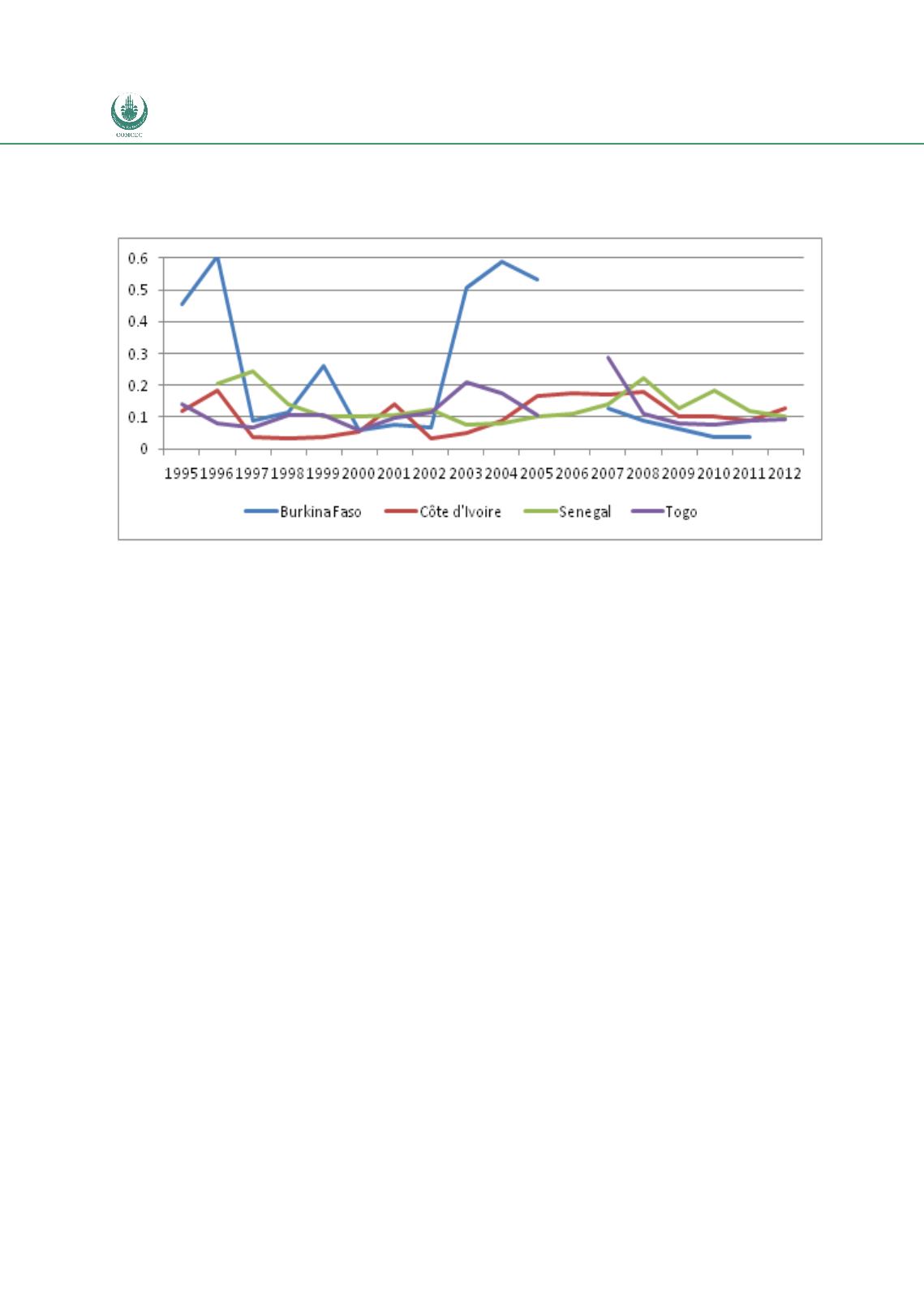

Preferential Trade Agreements and Trade Liberalization Efforts in the OIC Member States
With Special Emphasis on the TPS-OIC
142
Figure 68: Concentration of Intra-bloc Exports for Selected WAEMU Countries, 1995-2012 (higher
values indicate more concentrated trade)
Calculations based Comtrade data
Kazakhstan-Russia-Belarus Customs Union
Kazakhstan, one of several former Soviet Union (FSU) republics that are OIC members has
been involved in several trade and economic initiatives comprising some of the FSU region
since early 1990s. In 1994, Kazakhstan proposed forming a union of Eurasian states. In 1995,
Russia, Belarus and Kazakhstan signed the agreement declaring ambition of the parties to form
a Customs Union. In 1996, another agreement to the same effect was signed between the same
three countries and in addition also OIC members Kyrgyzstan and Tajikistan. In 2000,
Kazakhstan along with Russia, Belarus, Kyrgyzstan and Tajikistan launched a new
international organisation, the Eurasian Economic Community (EurAsEC).
In 2006, three countries: Kazakhstan, Russia and Belarus decided to establish that the customs
union that should re- main open to other EurAsEC members once they are ready to participate.
The following year witnessed the treaty establishing the customs union that eventually kicked
off from January 2010 with full-fledged activities starting in mid-2011. In parallel the same
three countries were signing various agreements related to setting up the Common Economic
Space that formally started to function from January 2012 (EurAsEC, 2013). Kyrgyzstan has
announced its intention to join the customs union but the process is still on-going.
The common external tariff was launched in January 2010 largely replicating Russia’s tariff
structure at the time. There remain certain exceptions in all countries that are to be removed
by 2015. The 2012 WTO accession of the first customs union member, Russia, resulted in
amendments of the single customs tariffs in line with Russia’s WTO commitments, generally

















